We get many enthusiastic calls and emails from people ready to get solar installed on their roofs. Their enthusiasm is exceeded only by their disappointment if we tell them that their projected return isn’t that good because their roof is far less than ideal.
How would we know? How could you know?
Here are some questions to ask, from the most basic (will the panels fit) to the complex (best direction, angle and impact of shading?). Together they should help you assess not only your own roof, but perhaps some of your friends as well.
Can solar panels fit on my roof?
ElectricChoice.com reports that the average home in New England uses approximately 7,412 kW hours of electricity per year. The heaviest users are in Connecticut with an average of 8,676 while Maine residents use just 6,612. A residential solar system sized to meet that demand (e.g. a 7.5-kW system of roughly 22 panels) can be installed on a 450 square foot roof. Square footage is length times height, so a 15’ x 30’ roof has 450 square feet.
But of course life is rarely that simple. That’s because a nice, clean rectangular roof is not that common here in New England. But luckily we design solar energy systems for all kinds of configurations. We work around different roof types, dormers, vent pipes, chimneys, and even skylights. In fact, sometimes we have to break up your array into multiple sections. We will do all we can to make your new system fit your roof as well as your needs. Plus, we do it with a keen eye for quality – true craftsmanship if you will – because that power production also needs to look good and last a long time (see photos below).
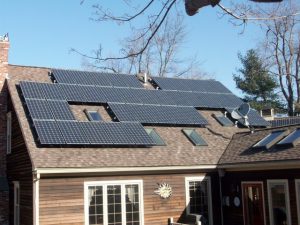
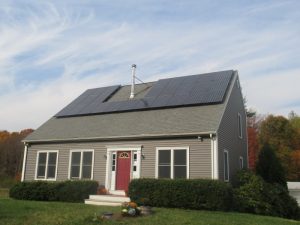
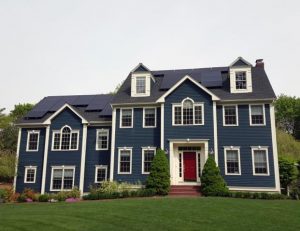
Most roof shapes work for solar, although hip roofs have less space than may initially meet the eye.

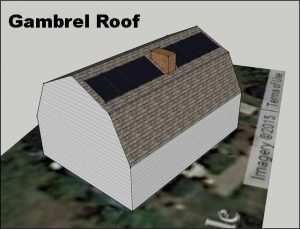
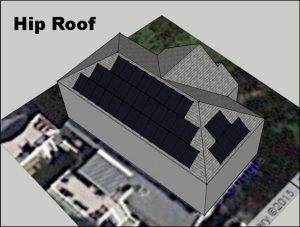
What about metal or rubber roofs?
Absolutely. Just as noted above, we strive to make solar work in as many situations as possible. So while one big rectangle would be easiest and most efficient, we can make systems fit on strange shapes as well as on roof surfaces other than asphalt shingles, such as standing seam or corrugated metal roofs or even rubber roofs. We just adjust the mounting method to fit that particular material’s needs. In fact, the only real caveat to “we can do that” answer on roof materials are already completed roofs made out of metal shingles, cedar, or slate. That’s because such materials don’t lend themselves to additions on top of them – or at least additions that won’t then cause a leak. But that does not mean it can’t be done. The key is to decide you want to go solar before you put up your metal shingle, cedar or slate roof. That way we can install the panel supports before (or in conjunction with) your new unique material roof. The mounts go up, the roof gets completed, and we then install your panels over them.
Is my roof good for solar?
So perhaps now you have figured out if your roof has enough room to hold some solar panels. If so, your next question should likely be “but will they work?”
As alluded to at the start of this article, the question about solar, beyond will the panels fit, isn’t really if you can install solar. The real question is will solar pay you back. That question is best answered by asking three key questions; which way does your roof face, what is the pitch of your roof, and how much shade is on it throughout the day. In short, the more direct sun the more power. The less direct sun, the less power. That’s probably terribly obvious, but it is the key to whether solar will work for you.
Which direction should my solar panels face?
Up here in the Northern Hemisphere the sun is always to our South so your solar roof should ideally face true South. In solar terminology we’d say the best compass “azimuth” (or bearing) is 180. But that of course isn’t always possible and further, with today’s improved panels a roof facing East, Southeast, Southwest or West also work very well. In fact, if your roof is nearly flat even North could “work”. It’s just a question of what kind of production you’ll get out of it and if that will indeed meet your needs.
What do you mean, “Kind of production”?
If I again jump into using solar terminology, a South facing roof with no shade is 100% of ideal and panels facing to the East or West produce about 85% of ideal. So while an East or West facing roof is not A+ work, it is at least a solid B. And what that means is an Eastern facing or Western facing roof is a good candidate that could give you many years of power production in return for your initial investment.
Are you directionally challenged? Try this Google Maps trick. Type in your address and zoom in to see your own roof (you can also switch to the “satellite view” to make finding your own roof easier). What Google will show you will always have North at the top of the map!
What about my roof pitch?
Although it is a less significant factor than azimuth, the angle or “pitch” of a roof should also be considered. For a roof in the Northeast, because of the sun’s position through the year, the ideal angle for maximum electricity production on a South-facing roof is 36 degrees. (This is also called a 9-pitch roof in the construction trade, but I’m going to talk in terms of angles or degrees.) However, almost any angle can work, even a flat roof. Again, the difference is your level of production.
In fact, a steeper roof is not always better for solar. For example, if you put solar on a West (or East) facing roof a lower pitch is better because more morning (or afternoon) sun reaches over the peak than with a higher pitch. That’s why I noted above that even a North facing roof could work if it was nearly flat.
And for those craving more detail on pitch and to talk the talk of construction experts here’s how angles translate into roof pitch:
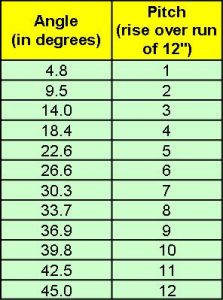
Okay, but what about shade?
The shade is, of course, the ultimate enemy of solar. Even a perfectly facing South roof at a 36 degree pitch will be totally undone by shade. But what is too much shade?
Ideally, your roof should get full sun between 9 AM and 3 PM all year round. Many people think their roof is sunny all day, but have you really looked at it multiple times throughout the day? Not surprisingly, if you haven’t you are not alone. So to do this test your best bet, when you’re home for an entire day, is to check your roof each hour and record how much sun is shining on it. Better still, do it a few times throughout the year. After all, 40% of your solar production comes during the winter, so summer is not the only season that matters – and your shade may be vastly different in different seasons.
The below graphic of where the sun is in the sky during different seasons tells you why it can be different:

Okay, do I need to check for shade for a full year?
No you do not. We have cool tools for that. First, we can estimate shading remotely using advanced satellite imagery and a newer technology called Lidar. We actually model your roof and the surrounding obstructions, like trees. Further, if you ask us to do a free site assessment in person we can use a fancy tool called a Suneye to take pictures that will calculate your actual production percentage. That’s how and why our production estimates can be so accurate.
And even if you do have a lot of trees you can cut trees to maximize your system’s production. If you’re curious about the environmental trade-off of cutting trees to install solar, see my “Tree Math” article. You may be very surprised at the carbon trade off.
Okay, now what?
Think your roof might possibly work for solar roof panels? If so and you live in our New England service area give us a call, we’d be happy to have a look. If your roof space isn’t quite enough to cover all the power you currently use fear not! After all, if you can reduce your electricity bill by even just 20% for a reasonable investment why wouldn’t you? Reduce your carbon footprint and save money all at the same time sounds good to me. Hopefully it does to you as well.
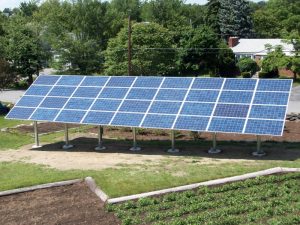
Plus, we do also install ground mounts, which can replace or even augment a roof installation. Do note that you are building a structure so it does cost a bit more, but it often can be placed facing due South. But either way, remember that covering 100% of your bill is definitely not necessary to get tremendous value out of your own solar system.
If you liked this article, you might also enjoy:
- How to Build a Solar-Friendly Home
- What’s in a Solar Production Estimate?
- Challenging the New York Times: Why Solar Panels Should Face South, Not West


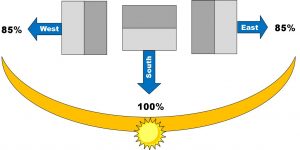
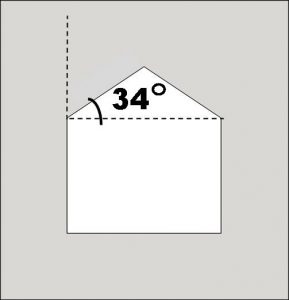
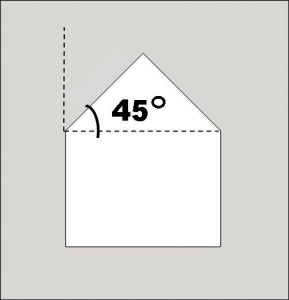
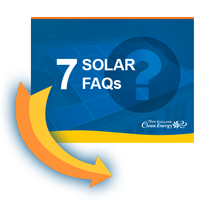 Download our 7 FAQs
Download our 7 FAQs


One Response to “Is my roof good for solar?”
Hi,
A very informative post covering all the aspects of the roof-top solar power installation.
In India, we have flat roofs as opposed to the inclined roofs in the western countries.
In densely populated cities like Delhi (India) or London where space is a limited resource, it is very important first to determine the total surface area of the solar panels based on your energy requirements.
If the calculated surface area is less than the roof-top area then installing a solar power system is a good option to meet your energy demands.
India receives a good amount of sunlight but due to lack of awareness about solar, the growth is not as expected.
I personally motivate people to install the solar power system on their roof-top.
Great information.
Keep writing!
Thanks
Yash 🙂
The comments are closed.